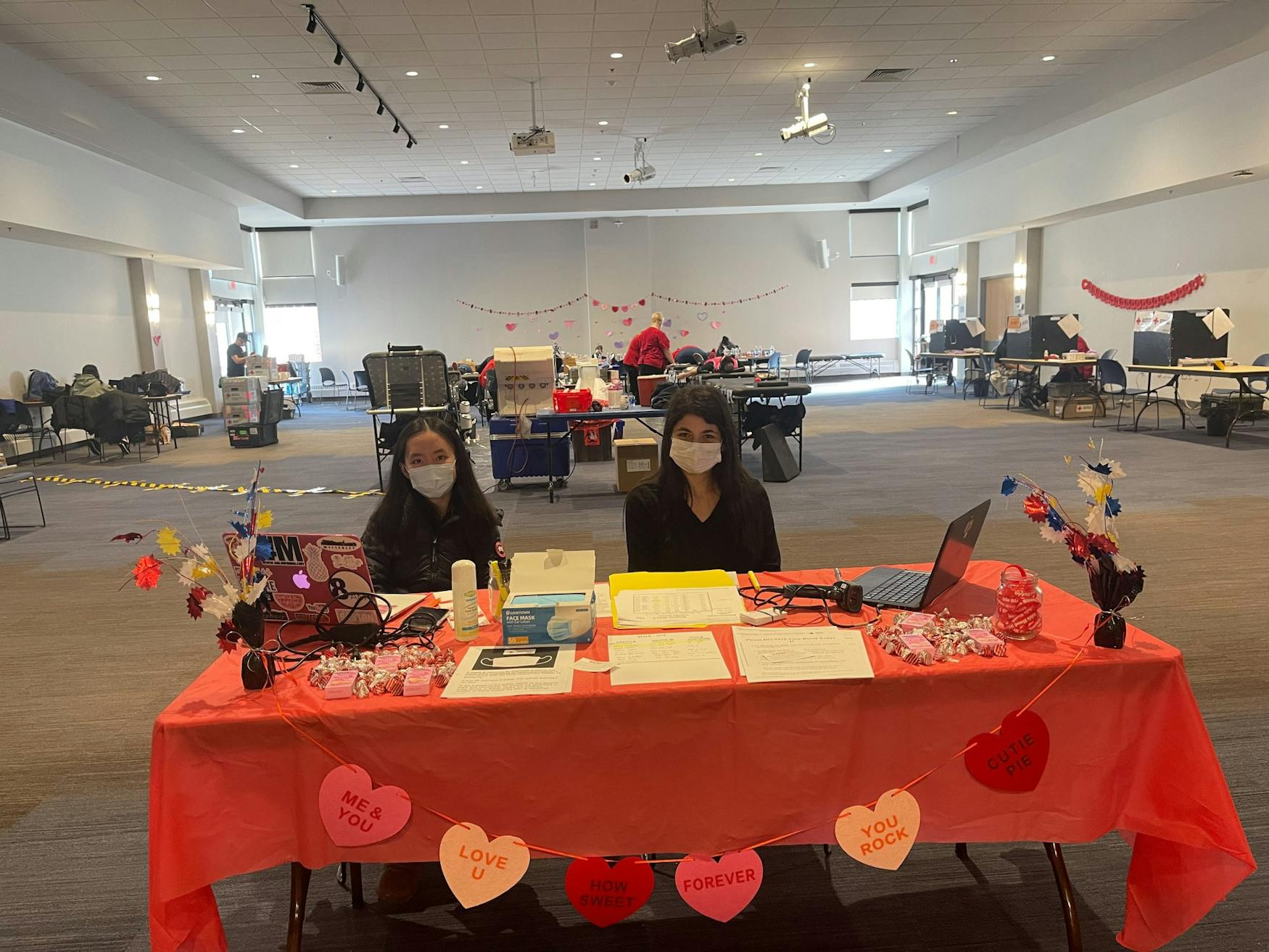Waltham Group hosts “Sweetheart Drive”
The drive occurred at a crucial time with America experiencing a critical blood shortage.
The American Red Cross is currently facing its worst national blood shortage in more than a decade, according to their website. On Monday, Feb. 7 and Wednesday, Feb. 9, Blood Drive, under the Waltham Group, hosted one of their triannual blood drives.
The “Sweetheart Drive” collected 55 units of blood, “which is on par with our usual amount collected. This has the potential to save 165 lives nationwide,” Hanna Aronovich ’22, a coordinator for Blood Drive, wrote in a Feb. 10 email to the Justice.
The shortage occurred alongside the pandemic; “The American Red Cross shared with us that there has been a 10% decline in donations since the beginning of the pandemic,” Aronovich wrote. In addition to patients not receiving the blood products they need, “Life-altering choices need to be made by healthcare providers for who gets the blood products and who does not when supplies are limited,” she added.
Additionally, because of the ongoing pandemic, many college and high school blood drives have been canceled. This is problematic because, as Aronovich wrote, “According to the American Red Cross website, high school and college blood drives used to make up about 25% of donations before the pandemic, and now that number has dropped to about 10%.”
Aronovich stressed that safety of the donors is the top priority during the drives. The Red Cross nurses “take a health history and mini physical before you donate to make sure you meet all the requirements and are healthy enough to go through with the donation,” she wrote. The actual blood donation process only takes about 10 to 15 minutes, and “you feel so good afterwards because you did a great deed,” she added. A few days following their donation, donors also learn their blood type via an email from the American Red Cross.
After donors’ blood is collected, “it gets tested to make sure it is safe to be transfused, and then it actually gets split into components,” Aronovich wrote. “They separate the blood into its red blood cells, platelets, and plasma, and these can be sent to all different locations,” including hospitals and other medical centers.
For students who do not want to donate but still want to be involved, there are many volunteer opportunities to assist with the blood drives. “We have over 90 volunteers per drive, and would not be able to be so successful without all of their hard work,” Aronovich wrote. Leading up to the drive, volunteers table to recruit donors on campus. On the day of the drive, volunteers greet and register donors and work in the post-donation area where donors have snacks and recover before they leave, she explained.
Waltham Group Blood drive hopes to “mitigate the decline [in drives and blood donations] by staying consistent with hosting blood drives even as restrictions change,” Aronovich concluded. Students can look forward to the next drive on April 11 and 13.



Please note All comments are eligible for publication in The Justice.